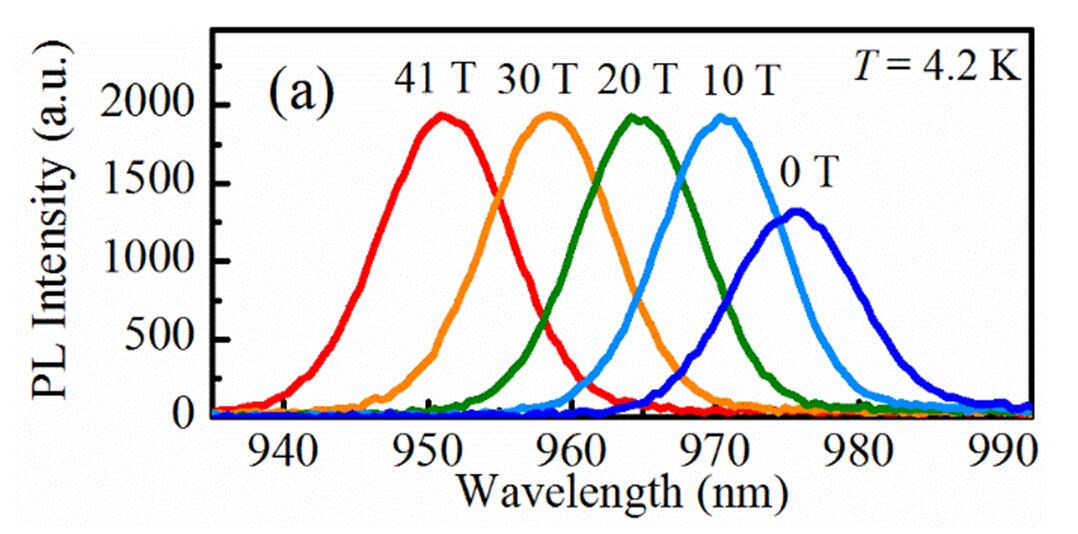
Diamagnetic shift of the photoluminescence of GaNAs in different high magnetic fields
(J. Alloy and Compd699,(2017) 297)
Background
Semiconductor alloys show interesting electrical and optical properties due to their continuous tunability of the band gap by the substituent atoms. Thus, they can be applied for tunable near- to mid-infrared optical devices, such as lasers, solar cells, and spintronic devices. GaNAs is a special semiconductor alloy in which a small content of nitrogen would induce carrier localization and unexpected band narrowing. The formation of the carrier dynamics and band structure is an open question.
What we discover?
We report the exploration of the low temperature photo-induced carrier dynamics in the GaAs0.985N0.015Alloy. Two different processes were found to result in a temperature dependent lifetime which has a constant value at the temperature below 30 K, and in this temperature region, an unexpected high magnetic field dependent critical behavior of the emission peak was observed.
Why is this important?
The near-infrared region is important especially because of the wide optical application in the telecom optical wavelength bands. Our discoveries are good for the understanding of the optical transitions, carries dynamics, electron localizations of the GaNAs system, which may inspirit engineers to fabricate opto-electronic devices with optimal performance.
Why did they need WHMFC?
In a high magnetic field, the electrons in a semiconductor are further confined, known as the magnetic confinement. Through this effect, the electronic band would be modified, and indicated by the optical emission spectra. The important parameters like the diamagnetic shift and the effective mass could be accurately extracted especially in the field as high as 20 Tesla.
Who did the research?
Cheng Chen1, Yi-Bo Han1, Jun-Bo Han1, and Liang Li1
1Wuhan National High Magnetic Field Center and school of physics, Huazhong University of Science & Technology, 1037 Luoyu road, Wuhan 430074, People’s Republic of China.
Xing-Jun Wang2, Ping-Ping Chen2
2National Laboratory for Infrared Physics, Shanghai Institute of Technical Physics, Chinese Academy of Sciences, Shanghai 200083, People’s Republic of China.
